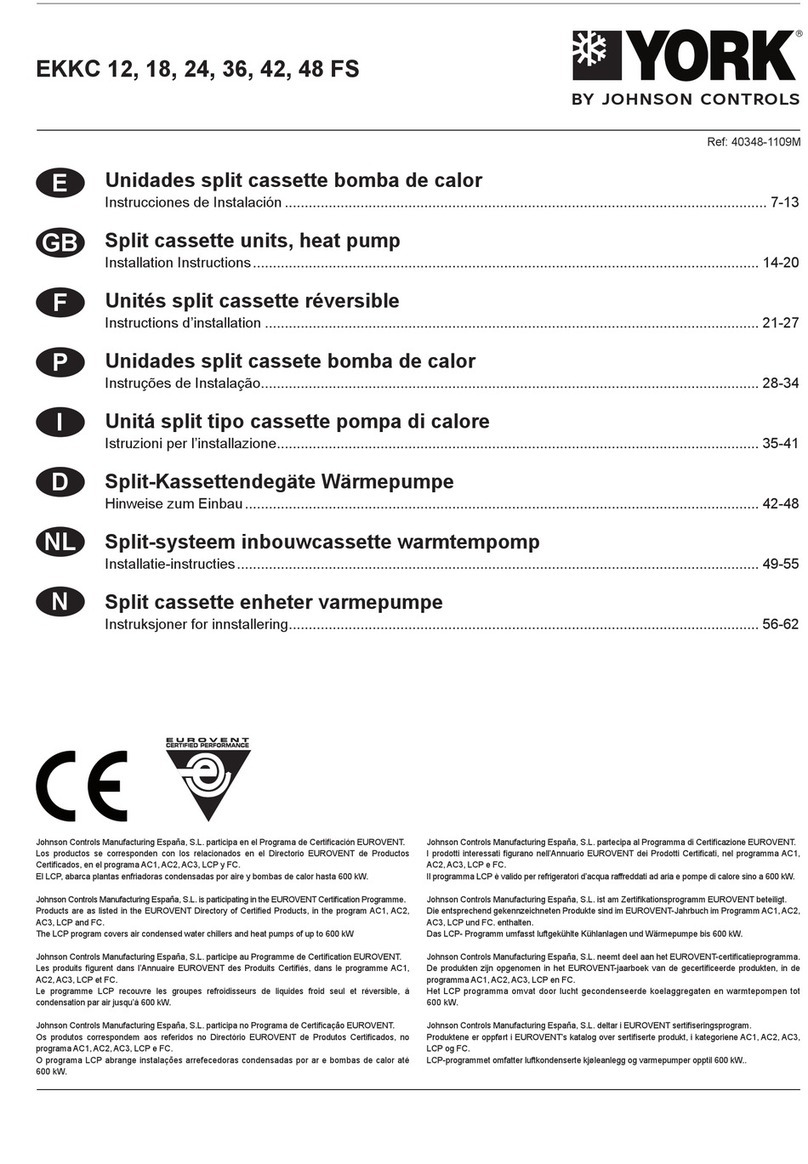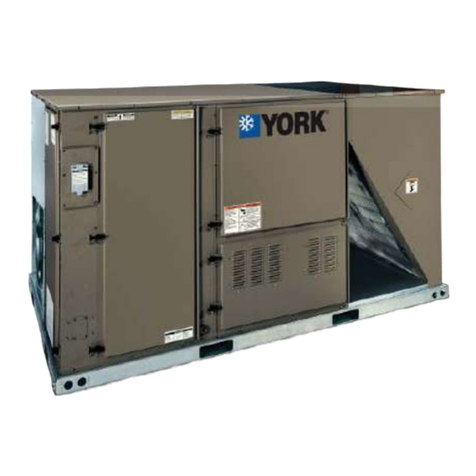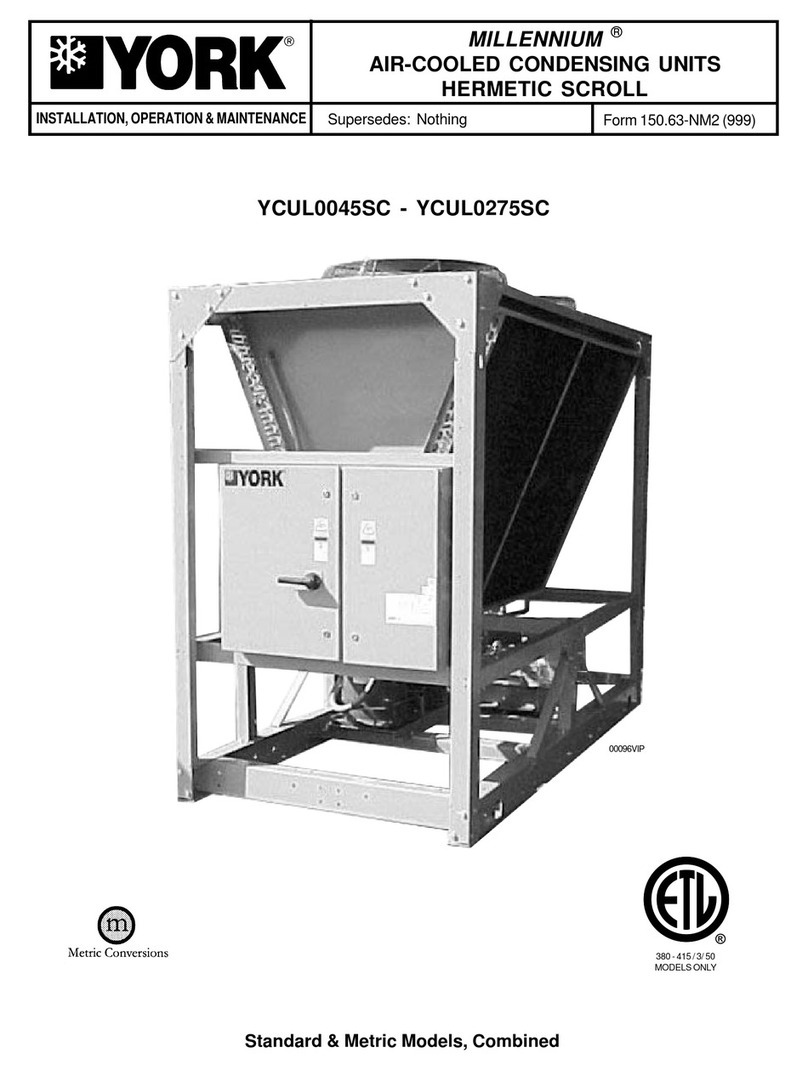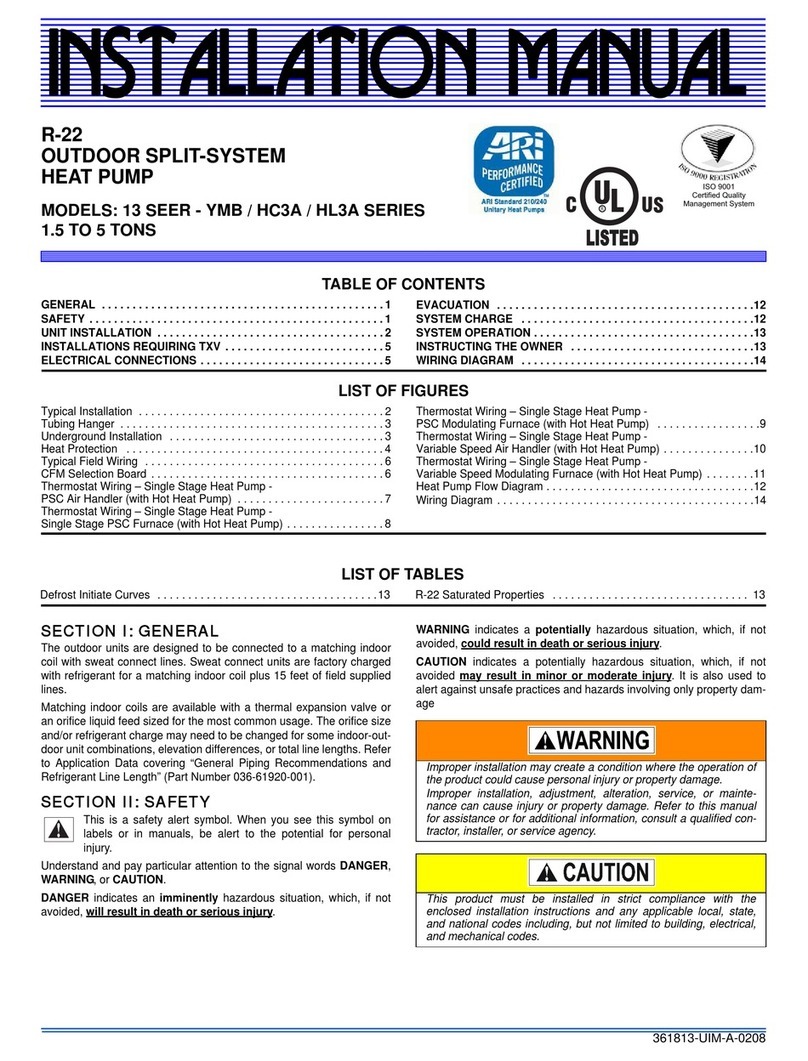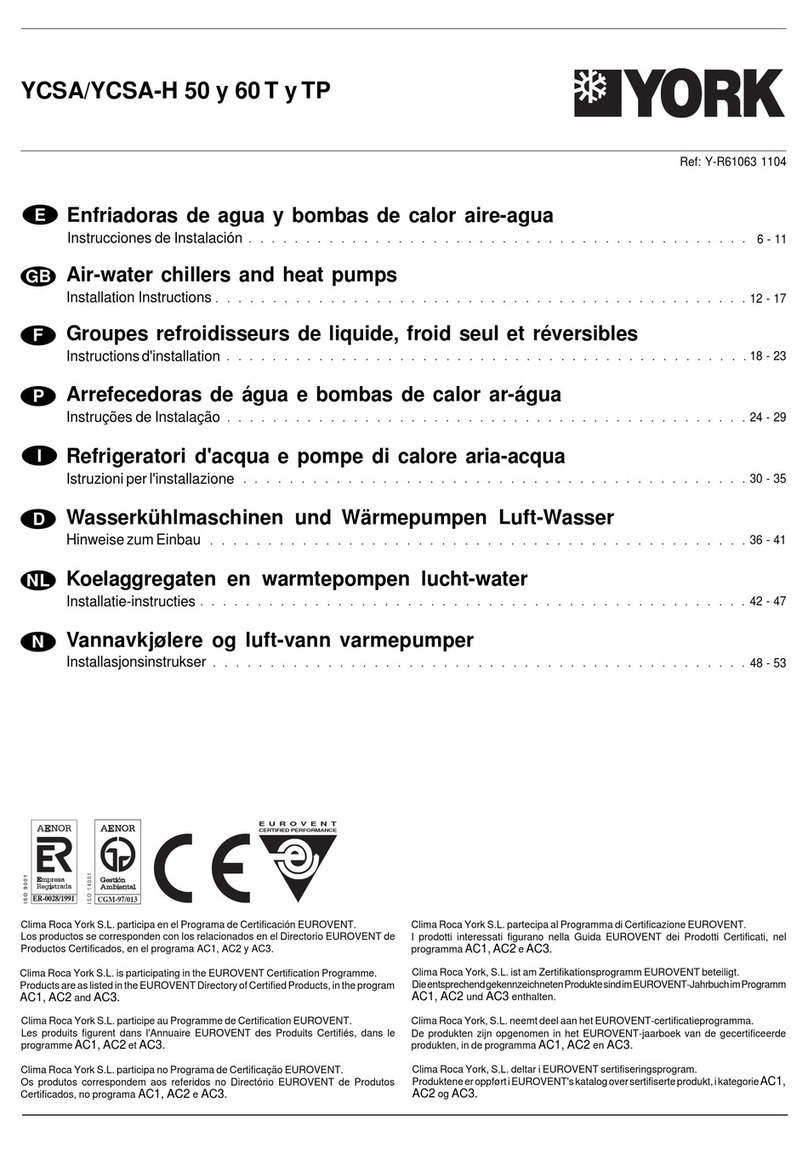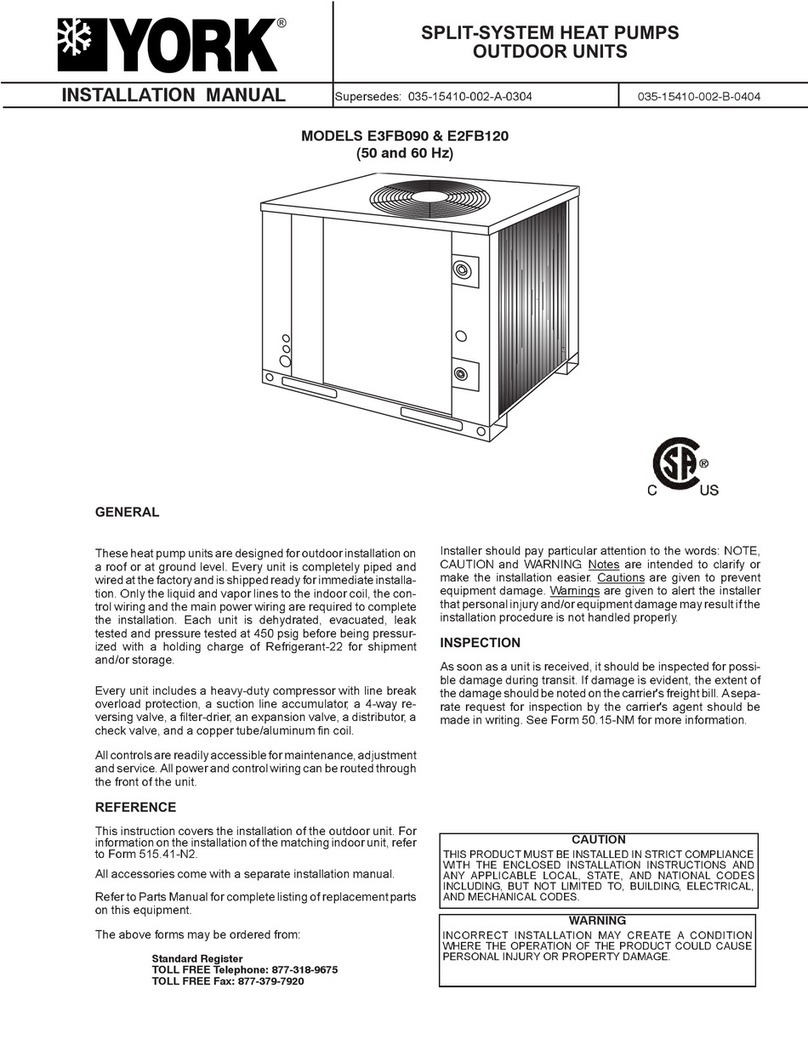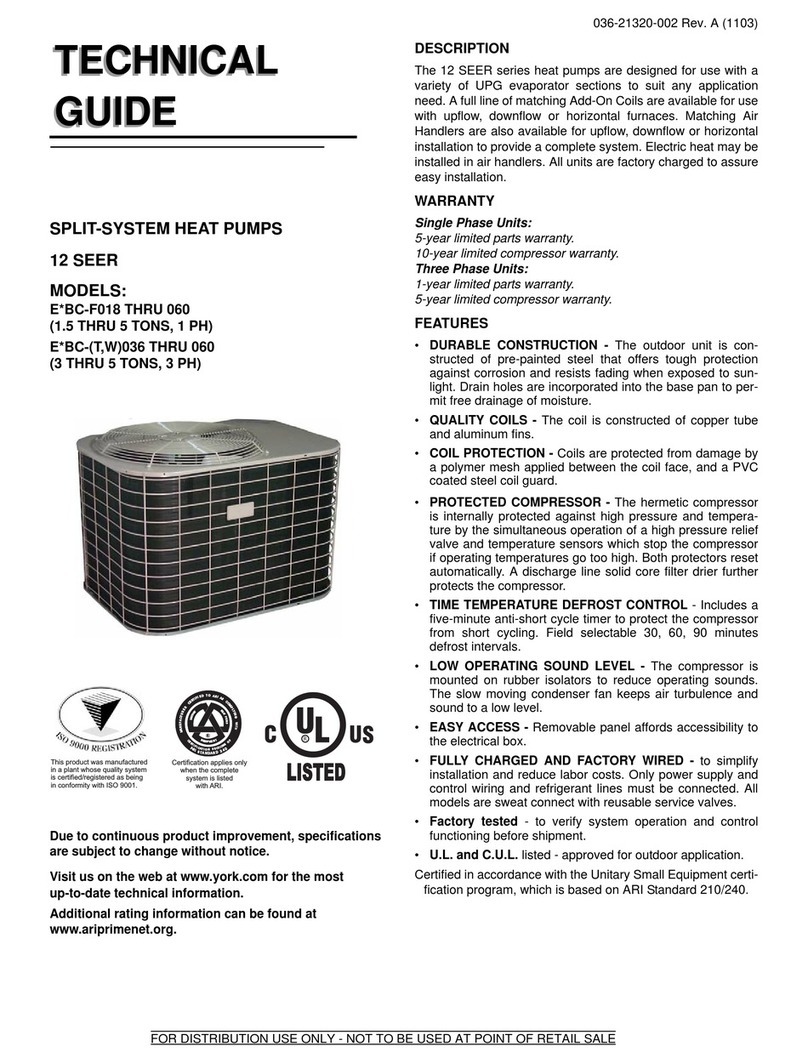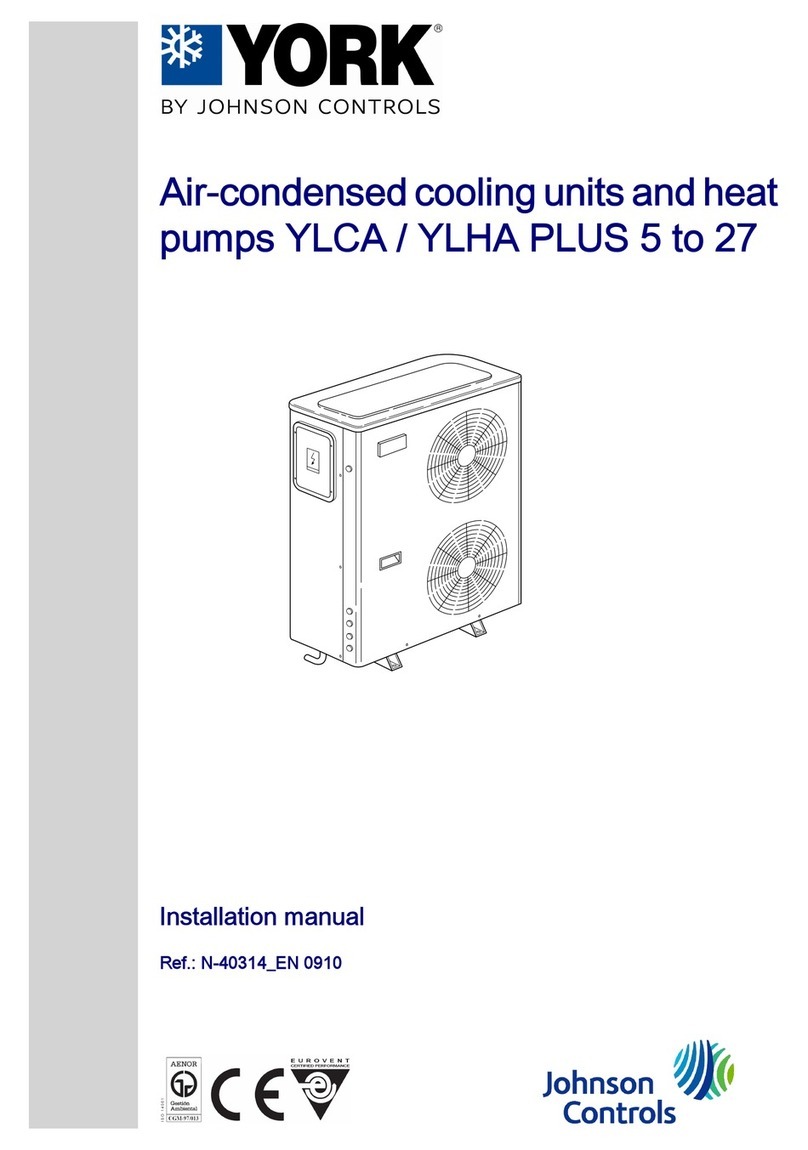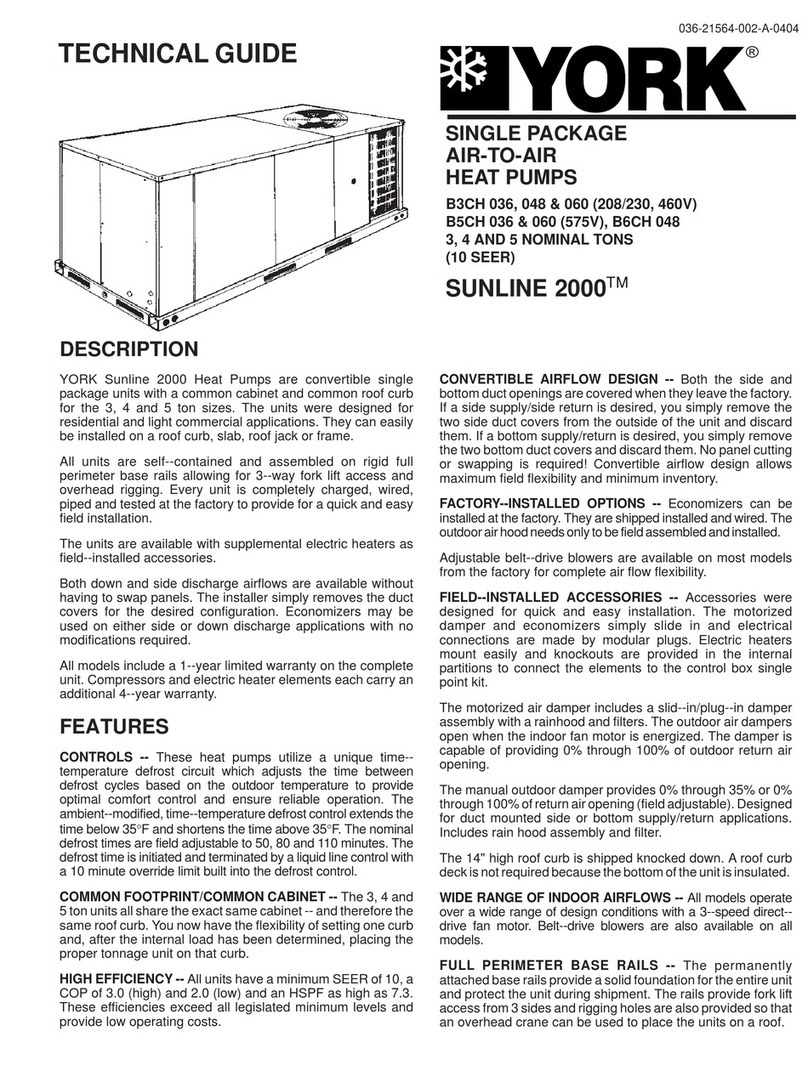
CLEARANCES
All units require certain clearances for proper operation and
service. Refer to Figure 3 for the clearances required for
combustion, construction, servicing and proper unit operation.
WARNING:Do not permit overhanging structures or shrubs to
obstruct the condenser air discharge outlet.
DUCTWORK
These units are adaptable to downflow use as well as rear
supply and return air duct openings. To convert to downflow,
use the following steps:
1. Remove the duct covers found in the bottom return and
supplyairductopenings.Therearefour(4)screwssecuring
each duct cover (save these screws to use later).
2. Install the duct covers, removed in step one, to the rear
supply and return air duct openings. Secure with the four
(4) screws used in step one.
3. Seal duct covers with silicone caulk.
Downflow units must have an “L”-shaped supply duct without
any outlets or registers located below the outlet of the unit.
Duct work should be designed and sized according to the
methods of the Air Conditioning Contractors of America
(ACCA), as set forth in their Manual D.
A closed return duct system shall be used. This shall not
preclude use of economizers or ventilation air intake. Flexible
joints may be used in the supply and return duct work to
minimize the transmission of noise.
CAUTION: When fastening duct work to the side duct flanges on
the unit, insert the screws through the duct flanges only.
DO NOT insert the screws through the casing.Outdoor
duct work must be insulated and waterproofed.
NOTE: Be sure to note supply and return openings.
Refer to Figure 4 for information concerning rear and bottom
supply and return air duct openings.
FILTERS
Single phase units are shipped without a filter and is the respon-
sibilityofthe installerto secureafilterin the return air ductwork
or install a Filter/Frame Kit (1FF0114).
A filter rack and a high velocity filters are standard on three
phase units.
Filters must always be used and must be kept clean. When
filters become dirt laden, insufficient air is delivered by the
blower, decreasing your unit’s efficiency and increasing oper-
ating costs and wear-and-tear on the unit and controls.
Filters should be checked monthly especially since this unit is
used for both heating and cooling.
CONDENSATE DRAIN
A condensate trap is required to be installed in the condensate
drain.The plumbing must conformtolocal codes.Useasealing
compound on male pipe threads.Install the condensate drain
line (3⁄4" NPTF) to spill into an open drain.
SERVICE ACCESS
Accesstoallserviceablecomponentsisprovidedbythefollow-
ing removable panels:
•Blower service access
•Electrical/Filter access
•Compressor service access
Refer to Figure 3 for location of these access panels and
minimum clearances.
THERMOSTAT
The room thermostat should be located on an inside wall
approximately 56" above the floor where it will not be subject
to drafts, sun exposure or heat from electrical fixtures or
appliances. Follow manufacturer’s instructions enclosed with
the thermostat for general installation procedure. Six color
coded insulated wires (minimum #18 AWG) should be used to
connect thermostat to unit.See Figure 2.
POWER AND CONTROL WIRING
Fieldwiringtotheunitmustconformtoprovisionsofthecurrent
N.E.C. ANSI/NFPA No. 70 or C.E.C. and/or local ordinances.
The unit must be electrically grounded in accordance with local
codes or, in their absence, with the N.E.C./C.E.C. Voltage
tolerances which must be maintained at the compressor termi-
nalsduringstartingandrunningconditionsareindicatedonthe
unit Rating Plate and Table 3.
Thewiringenteringthecabinetmustbeprovidedwithmechani-
cal strain relief.
A fused disconnect switch should be field provided for the unit. If
any of the wire supplied with the unit must be replaced, replace-
ment wire must be of the type shown on the wiring diagram.
Electrical line must be sized properly to carry the load. Each
unit must be wired with a separate branch circuit fed directly
from the meter panel and properly fused.
Refer to Figure 2 for typical field wiring and to the appropriate unit
wiring diagram for control circuit and power wiring information.
COMPRESSORS
Unitsareshippedwithcompressormountingsfactory-adjusted
and ready for operation.
CAUTION: Do Not loosen compressor mounting bolts.
511.18-N2Y
Unitary Products Group 3


